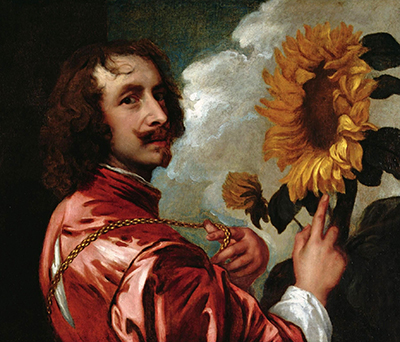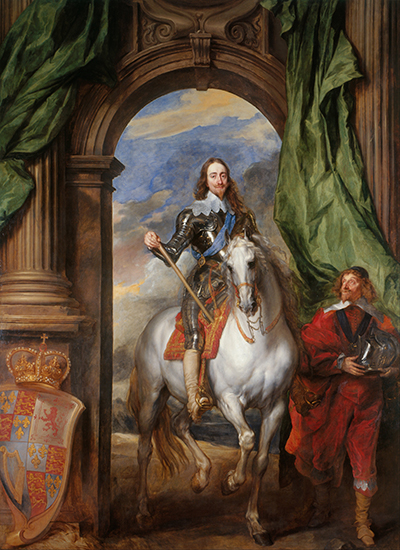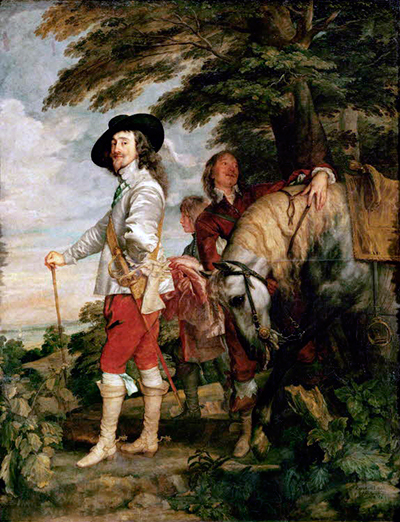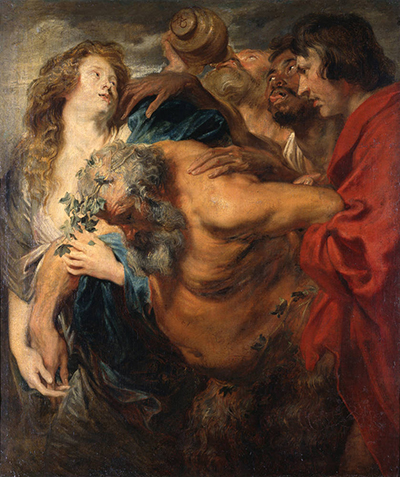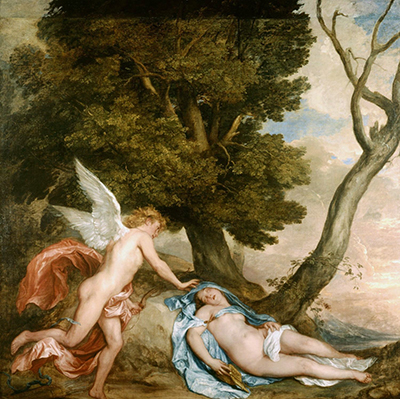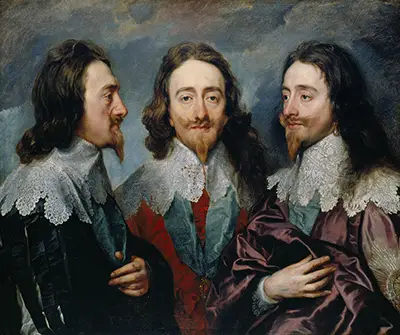Flemish artist Anthony van Dyck was one of the stars of the 17th century Baroque movement.
Introduction
Born in Antwerp, modern day Belgium, and inspired by the work of Peter Paul Rubens, van Dyck would receive some highly prestigious commissions once he had risen through the ranks.
The most famous of his high profile portraits focused on Charles I and members of his court. It was the natural ability of a young Anthony, combined with a passionate study of the workings of previous members of the Italian Renaissance that helped him to achieve such an outstanding reputation.
The artist would divide his time between Italy, the Netherlands and England in order to balance business with study. Titian was famously a key name in his development and someone he studied from home in the early years of his development.
Broad Ranging Artistic Skills
This Flemish painter would move to England in the early 1730s before helping to raise the standards of portraiture, with his work for the family of Charles I. He had earlier achieved a similar impact in the Italian city of Genoa. Beyond his respected portraiture, he also took on biblical and mythological subjects too. There was also significant contributions as a draughtsman, plus watercolour and etching.
Technical Qualities in Portraiture
The timing of Van Dyck's career, aligned with his love for portraiture, was entirely fortunate in coinciding with a huge hunger for this genre at around the same time. Unlike landscape art and religious scenes which have dominated other periods of European art, the 17th century was very much about portrait paintings of the rich and famous.
Anthony van Dyck was sensibly diplomatic with many of his portraits, tending to soften his subjects facial deficiencies, and promote their qualities to produce highly flattering portraits. They were positive enough to keep the donor onside, whilst also being sufficiently lifelike to complete the task at hand. Portraiture for nobility was a tricky balance for many artists, but Van Dyck became a master of satisfying his clients, ensuring his long term success.
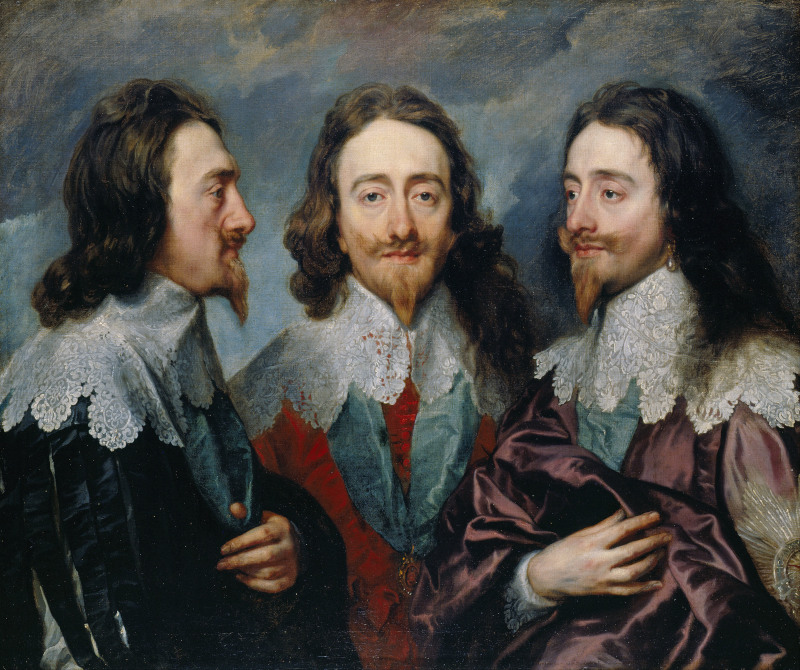 Charles I in Three Positions
Charles I in Three Positions
Two Excellent Documentaries on Anthony van Dyck
Life in Antwerp
Anthony van Dyck showed promise from an early age and was encouraged by his parents to study and practice his craft as an artist. As early as his late teens he was working as an artist professionally, and was well placed in Antwerp to take advantage of this highly cultured city. He would set up a studio with his friend, Jan Brueghel the Younger, and the confidence of youth helped them to overcome any initial barriers.
He would then be taken under the wing of the great masters Rubens, and this period allowed him to raise the technical quality of his work by learning directly from the finest artist in Antwerp at the time. After a number of years, van Dyck would receive interest from abroad, and from this point onwards would very much work independently.
The best of my pupils.
Peter Paul Rubens
Genoese Period
The artist lived in Italy from 1621-1627 and during this period it was the work of Titian which most influenced his work. He combined some of these bright, vibrant tones with the other technical insights brought in from Rubens to offer some sublime paintings of his own. Most of his time in Italy was spent in the affluent city of Genoa, where he worked as a portrait painter whose reputation was already established thanks to his connection to Rubens.
After carefully studying many of the great Italian masters alongside his day-to-day work, van Dyck decided to return to northern Europe, settling back in Antwerp until 1632. His new connections abroad would help to establish his legacy, and next he would look back to England for a second spell.
Anthony van Dyck Gallery
Influence on English Portraiture
Van Dyck returned to England in 1632 having already built up a small list of contacts after a previous visit. King Charles I had already enticed a number of Italian artists to join his court and was very generous in how he financed a number of ambitious artistic and architectural projects. Charles immediately selected Van Dyck as his preferred portrait painter, both for himself and the Queen.
His role in the court of Charles I was to be the peak of his career, and by this stage he had perfected a unique artistic style which was to strong influence English portraiture for the next century. He was rewarded with residence in London, and regularly received visitors wishing to sit for him. Van Dyck is known to have specifically influenced Thomas Gainsborough, John Singer Sargent and Thomas Lawrence, as well as a number who came before, who were his immediate followers.
Influential Artists from Flemish Europe
Anthony van Dyck was just one of a number of famous names from the Flemish/Netherlandish region of Europe over several centuries. Many of these were linked to the Dutch Golden Age. Key names included Albrecht Durer, Pieter Bruegel, Vermeer, van Eyck and Hieronymus Bosch as part of the Northern Renaissance, with a second wave coming in the centuries that followed, including the likes of Rembrandt. The region was respected for its early use of oils, as well as impressive technical work with engravings.
Van Dyck's role would therefore come a little later and also differed somewhat in that much of his impact was felt in Italy and England, rather than his native Antwerp. The inclusion of much of his work in British collections, even today, has also contributed to this situation though his reputation is today Europe-wide.
Conclusion
Anthony van Dyck would rise to become the leading court painter in England, having learnt much from his time in Italy and Antwerp. The artist's strong connection to one of the most famous English monarchs in history, and a true supporter of the visual arts, Charles I, has also helped to strengthen his legacy. Ultimately, he would eventually be knighted for his impressive service.
The artist was respected for his ability to infuse his portraits with the personality of the sitter, whilst also flattering them by adapting their image in a favourable manner. This approach spread throughout English portraiture, and became the fashionable style with which later generations would work. It is clear that van Dyck's switch to England helped to raise the technical levels across the country, with a number of young artists studying his technique and incorporating some of his ideas into their own.



